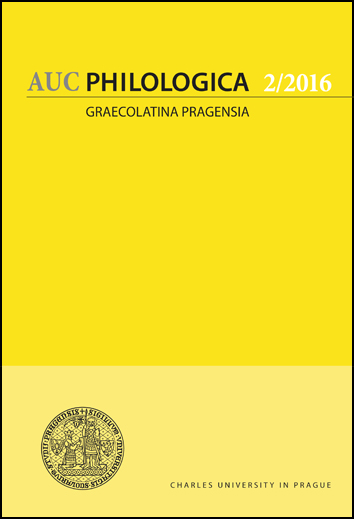Die Chorführung im mittelalterlichen Christus patiens
Directing the chorus in medieval Christus patiens
Author(s): Walter PuchnerSubject(s): Studies of Literature
Published by: Univerzita Karlova v Praze, Nakladatelství Karolinum
Keywords: Christus patiens; chorus of women; planctus Mariae; cento; stage business
Summary/Abstract: The Byzantine poem on the passion of Christ is neither a tragedy nor a drama but a cento – compilation of quotations from the Bible and the texts of ancient tragedies. There are three main arguments for dating the poem in the middle ages and not in the first centuries: the misunderstandings of ancient dramatic techniques as angelike rhesis and teichoskopia, not understanding the scenic consequences of the dramatic techniques implemented, the dependence of the central passion scenes from iconographic programmes elaborated just after the iconoclastic struggles, and the curses of Mary against Judas which correspond better with the anthropocentric mariology of the middle ages than the highly spiritual estimation of the traitor in patristic times as a mysterious instrument of salvation. In structural terms the poem is a planctus Mariae, the Holy Mother is accompanied by a chorus of women which functions as a sort of alter ego, but not as a real partner of communication. In other cases, the chorus is used mainly for technical purposes of stage business as announcing entrances and exits, defining presence and absence of stage characters, etc. This does not really correspond to the essentially reflective and poetical function of chorus in ancient tragedy. In this way the casual use of chorus in Christus patiens points to a late dating, too, when theatre cannot be traced any more in the Byzantine Empire, but ancient tragedies were studied, commented, and copied.
Journal: Acta Universitatis Carolinae Philologica
- Issue Year: 2016
- Issue No: 2
- Page Range: 25-32
- Page Count: 8
- Language: German

